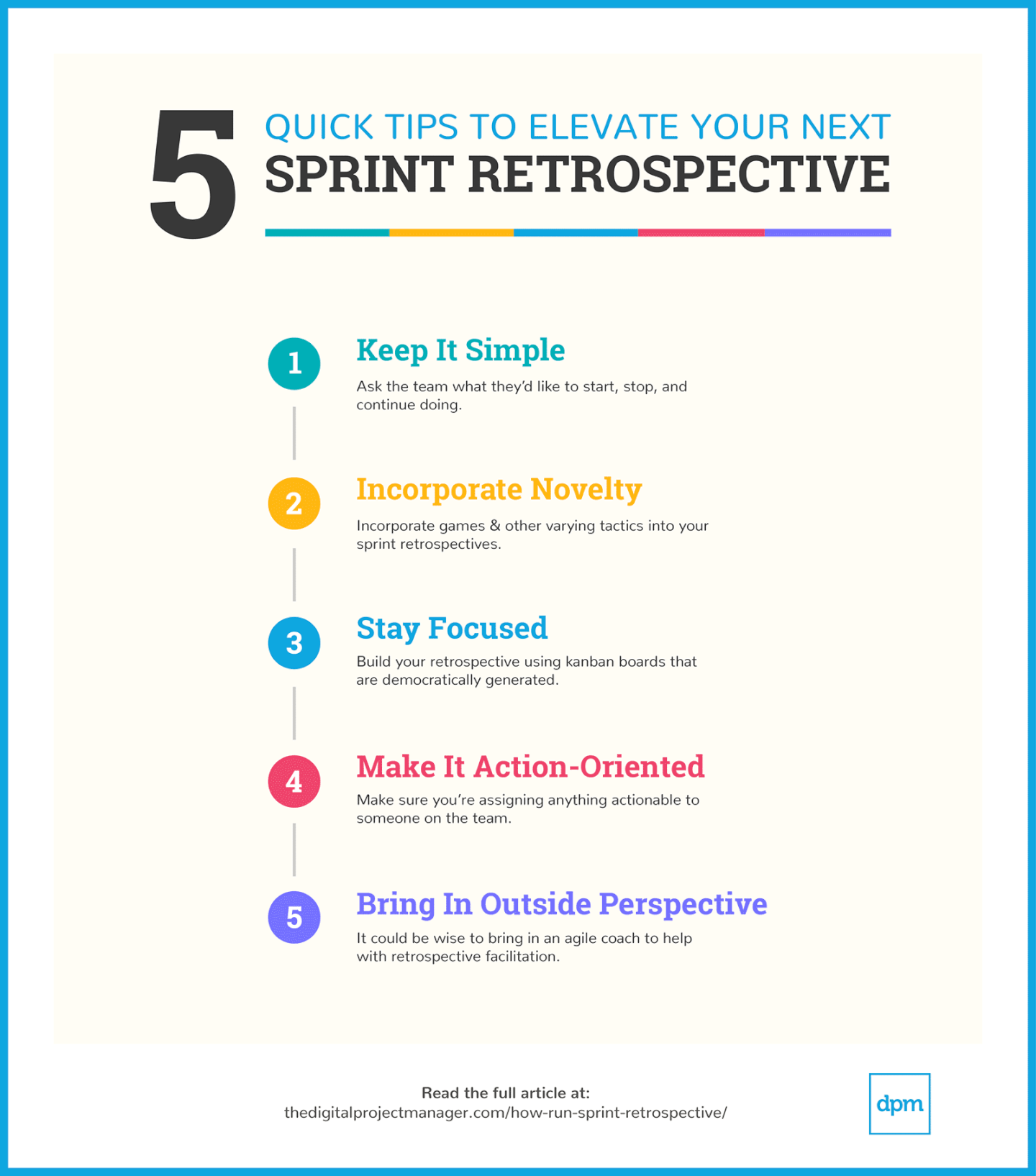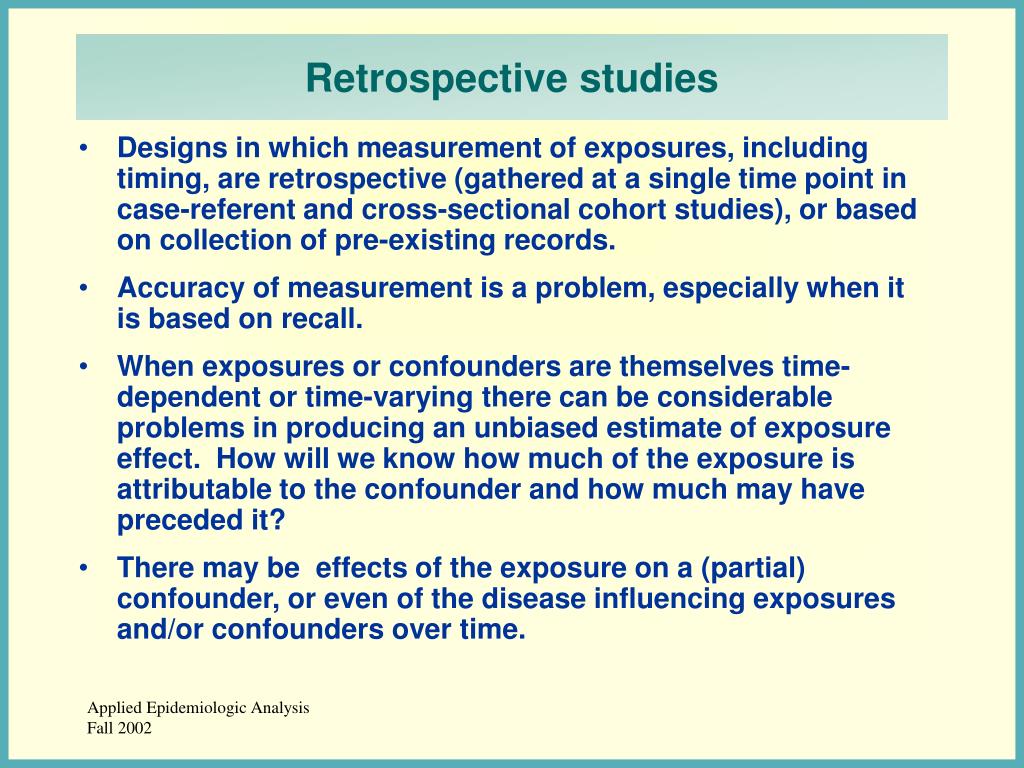

Communication between the participants is a particularly important aspect. Panel studies are a type of prospective study. Correctly designing retrospectives is particularly important when working in a team, as they offer an optimal basis for exchange within the team, but at the same time are not a sure-fire success. These studies measure people’s behaviors over time, specifically their opinions, feelings, emotions, and thoughts.
#DESIGN RETROSPECTIVE SOFTWARE#
Two additional features carry this encyclopedia far above other works in the field: bibliographic entries devoted to significant articles in the history of research design and reviews of contemporary tools, such as software and statistical procedures, used to analyze results.Ĭovers the spectrum of research design strategies, from material presented in introductory classes to topics necessary in graduate research Addresses cross- and multidisciplinary research needs, with many examples drawn from the social and behavioral sciences, neurosciences, and biomedical and life sciences Provides summaries of advantages and disadvantages of often-used strategies Uses hundreds of sample tables, figures, and equations based on real-life casesĭescriptive Statistics Distributions Graphical Displays of Data Hypothesis Testing Important Publications Inferential Statistics Item Response Theory Mathematical Concepts Measurement Concepts Organizations Publishing Qualitative Research Reliability of Scores Research Design Concepts Research Designs Research Ethics Research Process Research Validity Issues Sampling Scaling Software Applications Statistical Assumptions Statistical Concepts Statistical Procedures Statistical Tests Theories, Laws, and Principles Types of Variables Validity of Scores A panel study is a type of longitudinal study that involves sampling a cross-section of individuals at specific intervals for an extended period. This article was written by Jono Brandel, new media artist and team lead for Writing with Open Access. Posted by Rachel Ginsberg on October 19, 2021.

Similar to a prospective study, researchers conducting this study are also interested in learning about participants' development of a particular medical condition.
#DESIGN RETROSPECTIVE HOW TO#
At its heart it might be described as a formalized approach toward problem solving, thinking, and acquiring knowledge-the success of which depends upon clearly defined objectives and appropriate choice of statistical tools, tests, and analysis to meet a project's objectives.Ĭomprising more than 500 entries, the Encyclopedia of Research Design explains how to make decisions about research design, undertake research projects in an ethical manner, interpret and draw valid inferences from data, and evaluate experiment design strategies and results. Design Retrospective: Writing with Open Access. A retrospective study is a research project that involves reviewing the results of exposure to and developments of medical incidents that have already occurred. Conclusion: Retrospective studies, often considered inferior to prospective, randomized, and controlled clinical trials, can have strength and validity often not recognized in the hierarchy of clinical data. Clinical interventions may need to focus on individuals who are persistently high-risk.Research design can be daunting for all types of researchers.

Nonrandomized evaluations of interventions that identify patients based on a single high-risk score may spuriously appear to have positive effects. Predictors of being persistently high-risk included urban residence, chronic medical comorbidities, auditory and visual impairment, chronic pain, any cancer diagnosis, and social instability.įew patients who were high-risk for hospitalization at baseline remained so. We used multivariable logistic regression to identify characteristics predictive of being persistently high-risk through the last study month.Īfter 2 years, 17.7% had died, 13.8% had remained persistently high-risk for hospitalization, 41.5% had become persistently low-risk, and 19.9% were intermittently high-risk. During each of the following 24 months, patients were placed in 1 of 6 categories: death, hospitalized, no VHA care, persistently high-risk for hospitalization (≥10% probability), initially high-risk then persistently low-risk (<10% probability), and intermittently high-risk. Using a previously validated prediction algorithm, we identified a cohort of 258,759 patients enrolled in the Veterans Health Administration (VHA) who were in the top 5% of risk for hospitalization within 90 days. We aimed to describe subgroups of patients with distinct longitudinal risk score patterns to inform interventions tailored to patients' needs. Patients identified as high-risk at one point in time may not, however, remain high-risk. Many healthcare systems use prediction models to estimate and manage patient-level probability of hospitalization.


 0 kommentar(er)
0 kommentar(er)
